Member-owners reinvest in their service territory by building new headquarters, operational facilities
Great River Energy’s member-owner cooperatives have served their memberships with reliable, affordable electricity for nearly 90 years, and many are committing even further to these communities for decades to come as they construct modern operational facilities.
While much of the reasoning behind the decision to build new is unique to each individual cooperative, there are several common themes behind each project. These factors include improving safety and compliance, additional workspaces and the ability to incorporate energy efficient features and upgraded technologies.
In addition to improving service to members, these projects create significant economic development impacts for their communities. From hiring dozens of local contractors, to leasing former buildings to allow new opportunities for local businesses or to serve as community hubs, electric cooperatives continue to show their commitment to the communities they serve.
Stearns Electric Association
Melrose-based Stearns Electric Association’s dedication to its 29,000-plus members will be further enhanced through the capabilities provided by its new 89,000-square-foot facility. The cooperative has been headquartered out of Melrose since its inception in 1937, with its former building being in use since 1970.
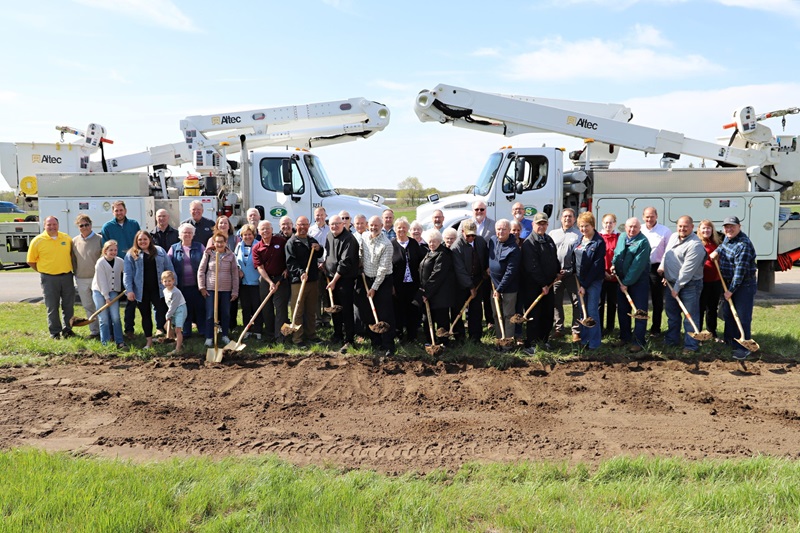
The newly constructed building, which officially opened on Aug. 19, addresses Stearns Electric’s growth while providing more efficient workflow and safety benefits.
“This investment is about our long-term commitment to our members,” said Matt O’Shea, the cooperative’s chief executive officer. “We asked ourselves: ‘How do we prepare to meet our community’s needs decades from now?’ It’s a forward-thinking plan that we know will provide the best value for our members.”
In addition to ensuring ample space for employees to work safely and efficiently, Stearns Electric specifically focused on the ability to provide more space and updated equipment to accommodate the increased size and demands of today’s fleet vehicles. The warehouse facility is over 60,000 square feet and addresses those needs. It also includes a mechanic shop, wash bay and transformer storage area.
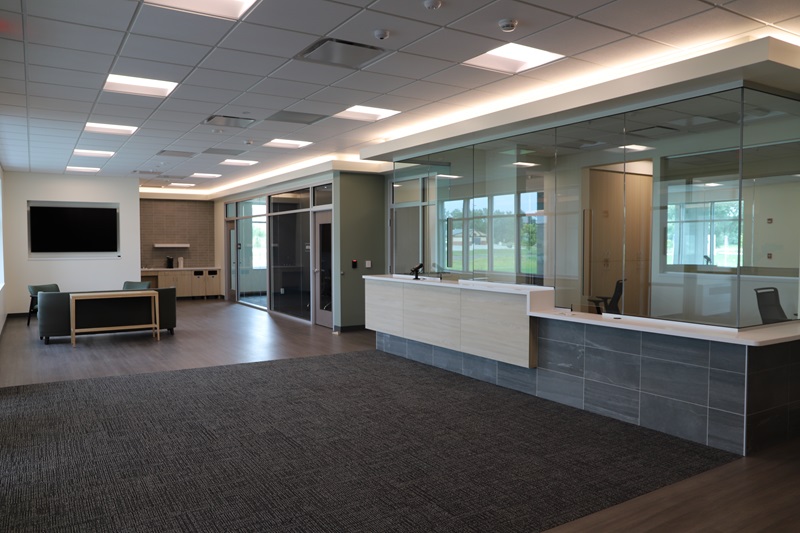
Other features include enhanced security to keep employees safer and member data even more secure; a dispatch area for efficient outage response; multi-purpose rooms that can be used for several purposes; the ability to hold large cooperative events on site; and room for future growth.
A majority of the cost to finance the new operations center and headquarters was factored into the cooperative’s 2023 rate adjustment for members, which was implemented in May of that year.
“As the facility neared completion, we took a strategic approach to moving employees, technology and supplies; always meeting our members’ needs during the transition,” O’Shea said.
Stearns Electric will host an open house at its new building on Oct. 1 where members can tour the new facility and ask questions.
Nobles Cooperative Electric
For many years, the Nobles Cooperative Electric board of directors has incorporated an upgraded facility into its long-term growth and planning strategy. But a proposal made in the fall of 2023 for a daycare center to operate from the cooperative’s current Worthington office expedited the timeline.
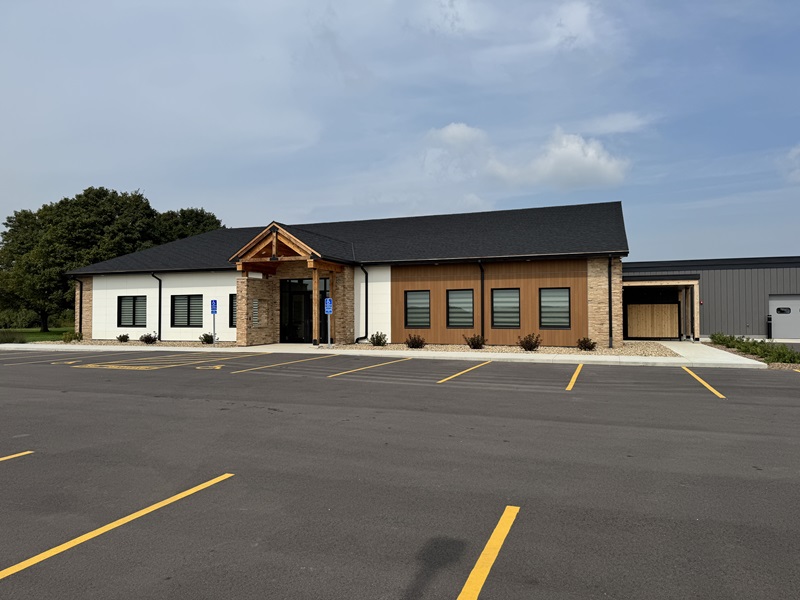
The cooperative took this opportunity to help serve the community, which Nobles Chief Executive Officer Adam Tromblay says has been experiencing a “critical shortage of daycare options in the Worthington and Nobles area,” as well as its members by constructing a new facility in Slayton that opened in early summer.
Like Stearns Electric, Nobles’ office had served the cooperative for more than 50 years but no longer supported the functional needs of a modern cooperative. The new facility was designed to be functional, technologically advanced and efficient — incorporating numerous energy efficient features.
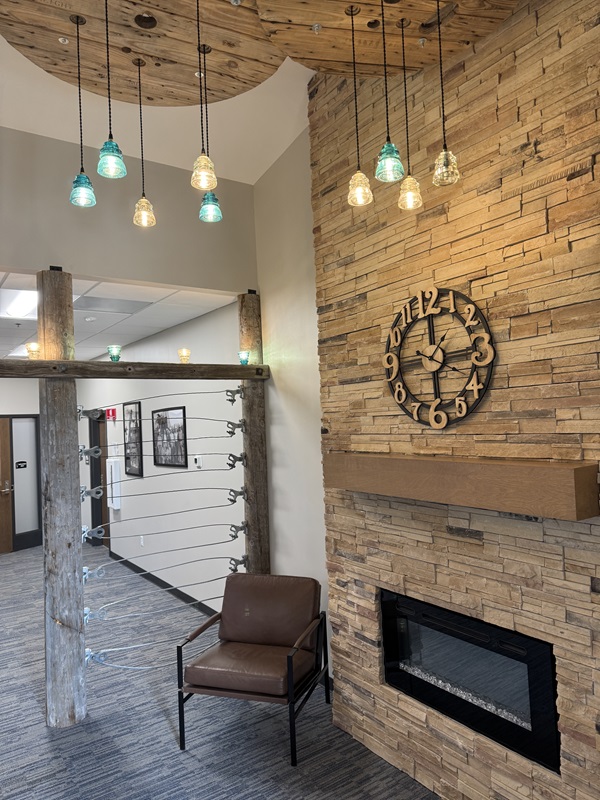
Other notable aspects of the new building include a design that enhances workflow with departments now grouped strategically to encourage communication and collaboration; ADA features to foster a more inclusive environment for employees and members; a multi-purpose board room; fleet storage; and a nod to the past through design elements and historical photos.
“Our new facility is more than just a building. It’s a foundation for growth, innovation and continued service. With improved infrastructure, updated technology, and space to expand, we’re better positioned than ever to deliver safe, reliable and affordable energy to our members,” said Nobles Member Services Manager Tracey Haberman. “We’ve always been a part of both the Worthington and Slayton communities — that won’t change — and our linemen continue to be based in both locations, providing the same dependable response times and reliability. But this new home strengthens our roots and our future.”
The cooperative’s headquarters project was funded using allocated cash reserves set aside through the board’s long-term planning efforts and will not affect member rates.
The cooperative continues to partner with Nobles County and Community Economic Development Associates on grant opportunities and other measures in pursuit of preparing the former Worthington office into a daycare center.
Agralite Electric Cooperative
Much like other member-owners that recently built new facilities, Agralite Electric Cooperative sought necessary space to support its growing operations efficiently and effectively long into the future.

The decision to build new was further supported by the results of a feasibility study that evaluated the difference in costs associated with a remodel of the existing facility, which was originally built in 1966, versus a new facility on the cooperative’s existing property. The board of directors decided that new construction would be the best option for the cooperative to support its mission of providing safe, reliable electricity to its members.
The cooperative broke ground in fall 2024 on a 63,000-square-foot facility just west of its current headquarters location in Benson that it expects to serve as the foundation for its operations for the next 60 years and beyond.
Agralite employees played a large role in developing what the new headquarters facility would look like and how it would function. They participated in focus groups and provided feedback that directly informed the design of several aspects of the new building.
Significant features of the new facility, which employees officially relocated to earlier this summer, include larger garages; an enhanced mechanic shop; meeting area; and secure storage spaces for critical material and equipment such as poles, wires, transformers and meters. Office departments and workspaces were also designed to make workflow more productive and efficient.
Agralite will host an open house for its new headquarters on Oct. 28.
Future projects
While some cooperatives have finished up their relocation efforts, others have just recently started the groundbreaking and construction process for their new facilities.
Dakota Electric Association officially broke ground in June on its new headquarters in Lakeville, located just a few miles from its current location in Farmington. The 210,000-square-foot “Energy Center” facility is expected to welcome all employees, vehicles, dispatch and operations under one roof by summer 2027.
Similar to other co-op stories, the headquarters office that Dakota Electric employees work out of was built in 1978 and no longer meets operational needs.
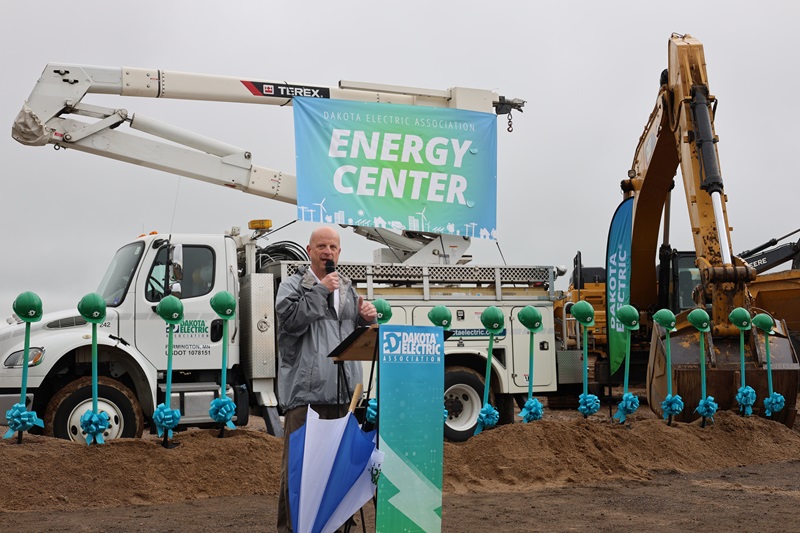
For example, the co-op is currently utilizing 36 garage stalls to accommodate 58 trucks and trailers. And, over the years, Dakota Electric has seen its membership grow from 15,000 consumers to 120,000 — with three to four times more inventory compared to 1978.
The new site will include improved equipment and vehicle storage as well as areas for future expansion.
“We’re excited to continue our strong tradition of service in a new facility designed to meet today’s needs and support tomorrow’s energy goals,” said Dakota Electric Association Chief Executive Officer Ryan Hentges. “This is more than just a building. It’s a center for energy leadership and innovation — a place where our members, employees and communities can come together to plan for the future.”
Additionally, the Minnesota Rural Electric Association (MREA), which serves as the statewide association for all of Minnesota’s 50 electric cooperatives, had also outgrown its space. After exploring every option from upgrading to remodeling or building new, it was decided that MREA would build a new facility on the site of its current facility in Maple Grove.
The new facility will offer similar features to the other new co-op builds, including an efficient layout and modern meeting spaces, including a room that seats up to 60 people, allowing MREA to host more events on site. By staying on the current site, MREA will continue to be served by Wright-Hennepin Cooperative Electric Association and remains accessible to the statewide membership.
MREA expects to move into its new facility in April 2026.
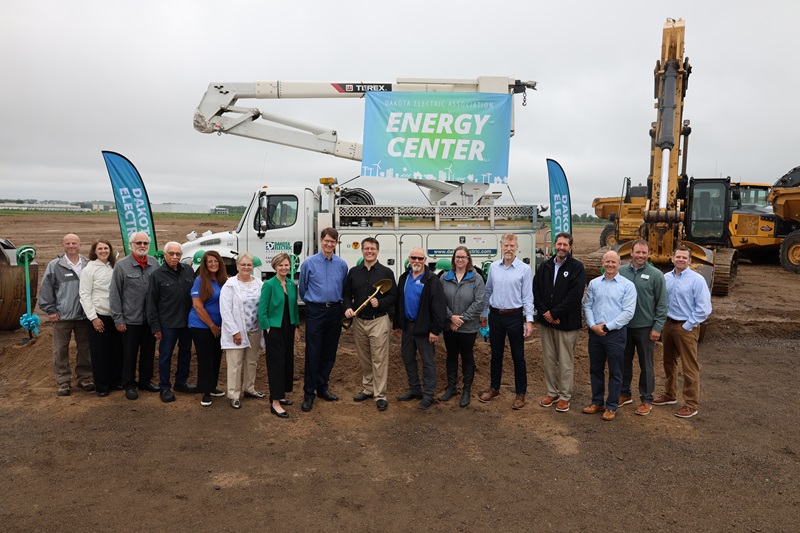
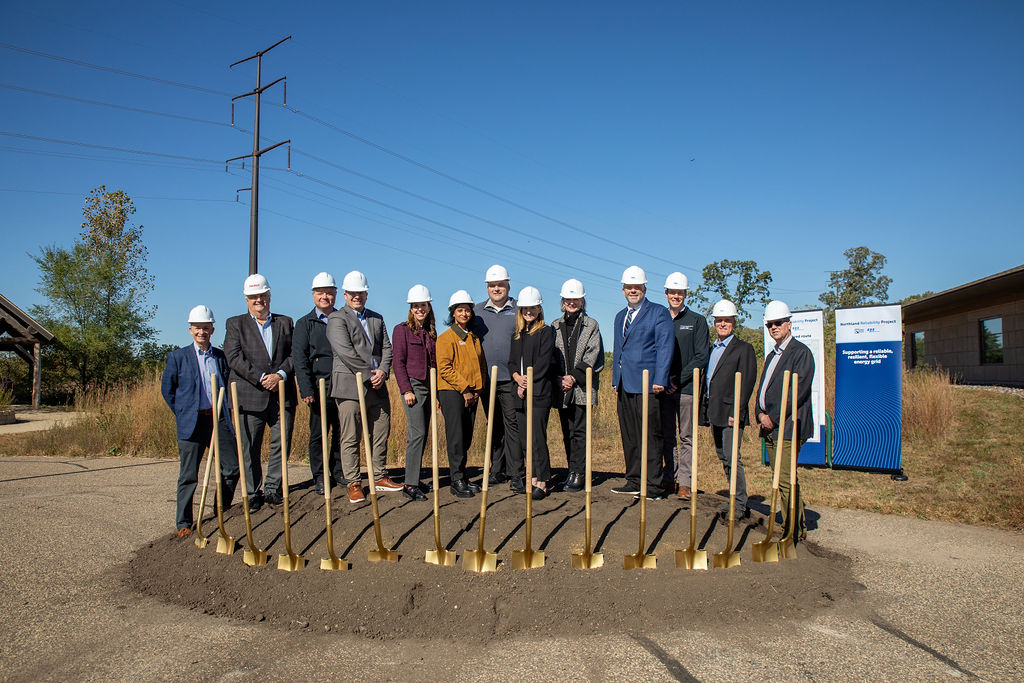 " data-object-fit="cover">
" data-object-fit="cover">